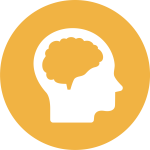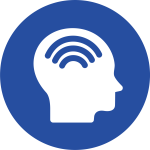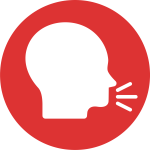1.9 Your “Principles of Leadership and Management” Survivor’s Guide
Learning Objectives
- Describe your learning style.
- Discover how to match your style to the circumstances.
Leadership courses typically combine knowledge about skills with the development and application of those skills. For these reasons, it is helpful for you to develop your own strategy for learning about and developing leadership skills. The first part of this strategy should be based on your own disposition toward learning. The second part of this strategy should follow some form of the gauge-discover-reflect process that is outlined in the next section.
Assess Your Learning Style
You can assess your learning style in a number of ways. At a very general level, you can assess your style intuitively (see “What Is Your Intuition about Your Learning Style?”); however, we suggest that you use a survey instrument like the Learning Style Index (LSI), the output from which you can then readily compare with your intuition. In this section, we discuss the dimensions of the LSI that you can complete easily and quickly online (Felder & Soloman, 2008). The survey will reveal whether your learning style is active or reflective, sensory or intuitive, visual or verbal, and sequential or global. [1]
Example: What Is Your Intuition About Your Learning Style?
Your learning style may be defined in large part by the answers to four questions:
- How do you prefer to process information: actively—through engagement in physical activity or discussion? Or reflectively—through introspection?
- What type of information do you preferentially perceive: sensory (external)—sights, sounds, physical sensations? Or intuitive (internal)—possibilities, insights, hunches?
- Through which sensory channel is external information most effectively perceived: visual—pictures, diagrams, graphs, demonstrations? Or verbal—words, sounds? (Other sensory channels like touch, taste, and smell are relatively untapped in most educational environments, and are not considered here.)
- How do you progress toward understanding: sequentially—in continual steps? Or globally—in large jumps, holistically?
Try out the Index of Learning Styles Questionnaire
Active and Reflective Learners
Everybody is active sometimes and reflective sometimes. Your preference for one category or the other may be strong, moderate, or mild. A balance of the two is desirable. If you always act before reflecting, you can jump into things prematurely and get into trouble, while if you spend too much time reflecting, you may never get anything done.
“Let’s try it out and see how it works” is an active learner’s phrase; “Let’s think it through first” is the reflective learner’s response. If you are an active learner, you tend to retain and understand information best by doing something active with it—discussing it, applying it, or explaining it to others. Reflective learners prefer to think about it quietly first.
Sitting through lectures without getting to do anything physical but take notes is hard for both learning types but particularly hard for active learners. Active learners tend to enjoy group work more than reflective learners, who prefer working alone.
Sensing and Intuitive Learners
Everybody is sensing sometimes and intuitive sometimes. Here too, your preference for one or the other may be strong, moderate, or mild. To be effective as a learner and problem solver, you need to be able to function both ways. If you overemphasize intuition, you may miss important details or make careless mistakes in calculations or hands-on work. If you overemphasize sensing, you may rely too much on memorization and familiar methods and not concentrate enough on understanding and innovative thinking.
Even if you need both, which one best reflects your learning style? Sensors often like solving problems by well-established methods and dislike complications and surprises; intuitors like innovation and dislike repetition. Sensors are more likely than intuitors to resent being tested on material that has not been explicitly covered in class. Sensing learners tend to like learning facts; intuitive learners often prefer discovering possibilities and relationships.
Sensors tend to be patient with details and good at memorizing facts and doing hands-on (laboratory) work; intuitors may be better at grasping new concepts and are often more comfortable than sensors with abstractions and mathematical formulations. Sensors tend to be more practical and careful than intuitors; intuitors tend to work faster and be more innovative than sensors.
Sensors don’t like courses that have no apparent connection to the real world (so if you are a sensor, you should love principles of leadership and management!); intuitors don’t like “plug-and-chug” courses that involve a lot of memorization and routine calculations.
Visual and Verbal Learners
In most college classes, very little visual information is presented to learners; students mainly listen to lectures and read material written on whiteboards, in textbooks, and on handouts. Unfortunately, most of us are visual learners, which means that we typically do not absorb nearly as much information as we would if more visual presentation were used in class. Effective learners are capable of processing information presented either visually or verbally.
Visual learners remember best what they see—pictures, diagrams, flowcharts, timelines, films, and demonstrations. Verbal learners get more out of words—written and spoken explanations. Everyone learns more when information is presented both visually and verbally.
Sequential and Global Learners
Sequential learners tend to follow logical, stepwise paths in finding solutions; global learners may be able to solve complex problems quickly or put things together in novel ways once they have grasped the big picture, but they may have difficulty explaining how they did it. Sequential learners tend to gain understanding in linear steps, with each step following logically from the previous one. Global learners tend to learn in large jumps, absorbing material almost randomly without seeing connections, and then suddenly “getting it.”
Many people who read this description may conclude incorrectly that they are global since everyone has experienced bewilderment followed by a sudden flash of understanding. What makes you global or not is what happens before the light bulb goes on. Sequential learners may not fully understand the material, but they can nevertheless do something with it (like solve the homework problems or pass the test) since the pieces they have absorbed are logically connected. Strongly global learners who lack good sequential thinking abilities, however, may have serious difficulties until they have the big picture. Even after they have it, they may be fuzzy about the details of the subject, while sequential learners may know a lot about specific aspects of a subject but may have trouble relating them to different aspects of the same subject or to different subjects.
Adapt Your Style
Okay, so what should you do now that you’ve assessed your learning style? Well, you can apply this valuable and important information about yourself to how you approach your principles of management course and the larger P-O-L-C framework.
Active Learners
 If you act before you think, you are apt to make hasty and potentially ill-informed judgments. You need to concentrate on summarizing situations and taking time to sit by yourself to digest the information you have been given before jumping in and discussing it with others.
If you act before you think, you are apt to make hasty and potentially ill-informed judgments. You need to concentrate on summarizing situations and taking time to sit by yourself to digest the information you have been given before jumping in and discussing it with others.
If you are an active learner in a class that allows little or no class time for discussion or problem-solving activities, you should try to compensate for these lacks when you study. Study in a group in which the members take turns explaining different topics to one another. Work with others to guess what you will be asked on the next test, and figure out how you will best answer those questions. You will always retain information better if you find ways to do something with it.
Reflective Learners
 If you think too much, you risk doing nothing—ever. There comes a time when a decision has to be made or an action taken. Involve yourself in group decision-making whenever possible, and try to apply the information you have in as practical a manner as possible.
If you think too much, you risk doing nothing—ever. There comes a time when a decision has to be made or an action taken. Involve yourself in group decision-making whenever possible, and try to apply the information you have in as practical a manner as possible.
If you are a reflective learner in a class that allows little or no class time for thinking about new information, you should try to compensate for this lack when you study. Don’t simply read or memorize the material; stop periodically to review what you have read and to think of possible questions or applications. You might find it helpful to write short summaries of readings or class notes in your own words. Doing so may take extra time but will enable you to retain the material more effectively.
Sensory Learners
 If you rely too much on sensing, you tend to prefer what is familiar and concentrate on facts you know instead of being innovative and adapting to new situations. Seek out opportunities to learn theoretical information and then bring in facts to support or negate these theories.
If you rely too much on sensing, you tend to prefer what is familiar and concentrate on facts you know instead of being innovative and adapting to new situations. Seek out opportunities to learn theoretical information and then bring in facts to support or negate these theories.
Sensors remember and understand information best if they can see how it connects to the real world. If you are in a class where most of the material is abstract and theoretical, you may have difficulty. Ask your instructor for specific examples of concepts and procedures, and find out how the concepts apply in practice. If the teacher does not provide enough specifics, try to find some in your course text or other references or by brainstorming with friends or classmates.
Intuitive Learners
 If you rely too much on intuition, you risk missing important details, which can lead to poor decision-making and problem-solving. Force yourself to learn facts or memorize data that will help you defend or criticize a theory or procedure you are working with. You may need to slow down and look at the details you would otherwise typically skim.
If you rely too much on intuition, you risk missing important details, which can lead to poor decision-making and problem-solving. Force yourself to learn facts or memorize data that will help you defend or criticize a theory or procedure you are working with. You may need to slow down and look at the details you would otherwise typically skim.
Many college lecture classes are aimed at intuitors. However, if you are an intuitor and you happen to be in a class that deals primarily with memorization and rote substitution in formulas, you may have trouble with boredom. Ask your instructor for interpretations or theories that link the facts, or try to find the connections yourself. You may also be prone to careless mistakes on tests because you are impatient with details and don’t like repetition (as in checking your completed solutions). Take time to read the entire question before you start answering, and be sure to check your results.
Visual Learners
 If you concentrate more on pictorial or graphical information than on words, you put yourself at a distinct disadvantage because verbal and written information is still the main preferred choice for the delivery of information. Practice your note-taking, and seek out opportunities to explain information to others using words.
If you concentrate more on pictorial or graphical information than on words, you put yourself at a distinct disadvantage because verbal and written information is still the main preferred choice for the delivery of information. Practice your note-taking, and seek out opportunities to explain information to others using words.
If you are a visual learner, try to find diagrams, sketches, schematics, photographs, flowcharts, or any other visual representation of course material that is predominantly verbal. Ask your instructor, consult reference books, and see whether any videos, TedTalks, or other displays of the course material are available. Prepare a concept map by listing key points, enclosing them in boxes or circles, and drawing lines with arrows between concepts to show connections. Color-code your notes with a highlighter so that everything relating to one topic is the same color.
Verbal Learners
 As with visual learners, look for opportunities to learn through audiovisual presentations, podcasts, etc. When making notes, group information according to concepts, and then create visual links with arrows going to and from them. Take every opportunity you can to create charts, tables, and diagrams.
As with visual learners, look for opportunities to learn through audiovisual presentations, podcasts, etc. When making notes, group information according to concepts, and then create visual links with arrows going to and from them. Take every opportunity you can to create charts, tables, and diagrams.
Write summaries or outlines of course material in your own words. Working in groups can be particularly effective: you gain an understanding of the material by hearing classmates’ explanations, and you learn even more when you do the explaining.
Sequential Learners
 When you break things down into small components you are often able to dive right into problem-solving. This seems to be advantageous but can often be unproductive. Force yourself to slow down and understand why you are doing something and how it is connected to the overall purpose or objective. Ask yourself how your actions are going to help you in the long run. If you can’t think of a practical application for what you are doing, then stop and do some more “big picture” thinking.
When you break things down into small components you are often able to dive right into problem-solving. This seems to be advantageous but can often be unproductive. Force yourself to slow down and understand why you are doing something and how it is connected to the overall purpose or objective. Ask yourself how your actions are going to help you in the long run. If you can’t think of a practical application for what you are doing, then stop and do some more “big picture” thinking.
Most college courses are taught in a sequential manner. However, if you are a sequential learner and you have an instructor who jumps around from topic to topic or skips steps, you may have difficulty following and remembering. Ask the instructor to fill in the skipped steps, or fill them in yourself by consulting references. When you are studying, take the time to outline the lecture material for yourself in logical order. In the long run, doing so will save you time. You might also try to strengthen your global thinking skills by relating each new topic you study to things you already know. The more you can do so, the deeper your understanding of the topic is likely to be.
Global Learners
 If grasping the big picture is easy for you, then you can be at risk of wanting to run before you can walk. You see what is needed but may not take the time to learn how best to accomplish it. Take the time to ask for explanations, and force yourself to complete all problem-solving steps before coming to a conclusion or making a decision. If you can’t explain what you have done and the rationale for your actions, then you may have missed critical details.
If grasping the big picture is easy for you, then you can be at risk of wanting to run before you can walk. You see what is needed but may not take the time to learn how best to accomplish it. Take the time to ask for explanations, and force yourself to complete all problem-solving steps before coming to a conclusion or making a decision. If you can’t explain what you have done and the rationale for your actions, then you may have missed critical details.
If you are a global learner, it can be helpful for you to realize that you need the big picture of a subject before you can master details. If your instructor plunges directly into new topics without bothering to explain how they relate to what you already know, it can cause problems for you. Fortunately, there are steps you can take that may help you get the big picture more rapidly. Before you begin to study the first section of a chapter in a text, skim through the entire chapter to get an overview. Doing so may be time-consuming initially, but it may save you from going over and over individual parts later. Instead of spending a short time on every subject every night, you might find it more productive to immerse yourself in individual subjects for large blocks. Try to relate the subject to things you already know, either by asking the instructor to help you see connections or by consulting references. Above all, don’t lose faith in yourself; you will eventually understand the new material, and understanding how it connects to other topics and disciplines may enable you to apply it in ways that most sequential thinkers would never dream of.
“Your Principles of Management Survivor’s Guide” in Principles of Management by University of Minnesota is licensed under a Creative Commons Attribution-NonCommercial-ShareAlike 4.0 International License, except where otherwise noted.
- Felder, Richard K. and Linda K. Silverman. In addition to their research, there is an online instrument used to assess preferences on four dimensions (active or reflective, sensing or intuitive, visual or verbal, and sequential or global) of a learning style model formulated by Felder and Soloman of North Carolina State University. The Learning Styles Index (LSI) may be used at no cost for non-commercial purposes by individuals who wish to determine their own learning style profile and by educators who wish to use it for teaching, advising, or research. See R. M. Felder, and R. Brent, “Understanding Student Differences,” Journal of Engineering Education 94, no. 1 (2005): 57–72, for an exploration of differences in student learning styles, approaches to learning (deep, surface, and strategic), and levels of intellectual development, with recommended teaching practices to address all three categories. R. M. Felder, and J. E. Spurlin, “Applications, Reliability, and Validity of the Index of Learning Styles,” Journal of Engineering Education 21, no. 1 (2005): 103–12, provides a validation study of the LSI. Also see T. A. Litzinger, S. H. Lee, J. C. Wise, and R. M. Felder, “A Psychometric Study of the Index of Learning Styles,” Journal of Engineering Education 96, no. 4 (2007): 309–19. ↵

